
[caption id="ADaytoVisit_Feature" align="aligncenter" width="1024"]
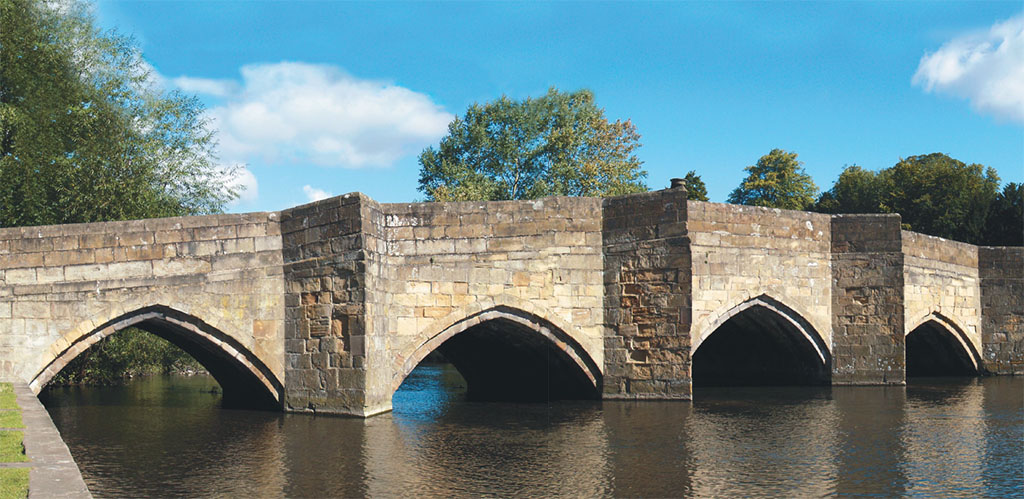
©MIKE DABELL/ISTOCK PHOTO
‘MOST VISITORS TO BAKEWELL, DERBYSHIRE, ARE WALKERS FRESH FROM THE HILLS, OR SIGHTSEERS’
For six days a week, most visitors to Bakewell, Derbyshire, are walkers fresh from exploring the nearby hills or sightseers heading for Chatsworth and Haddon Hall.
On Monday, however, Bakewell’s gentle bustle yields to the vibrant buzz of business as people throng its markets. There are two: an agricultural market where animals are auctioned, and a stall market that sells everything from oatcakes to antiques, perfumes to pots and pans.
Bakewell has the perfect location for a market. Set in the vale of the fast-flowing Wye, it is in easy reach of farmers and traders from the Pennines that rise around it. The first market was recorded in 1254. Now, its new Agricultural Business Center—“the ABC”—is well worth a Monday-morning visit. Stony-faced farmers in flat tweed caps gaze at the cows, bulls and sheep in the ring, showing little response except an occasional laconic murmur to a pal. The auctioneer gabbles away—incomprehensibly to the uninitiated—until finally he names an attractive price, someone makes a tiny upward gesture and the animal is sold.
Outside the ABC, two squares are covered with merchants’ stalls. Many sell necessities—food, clothes and kitchenware— but some specialize. One stall sells virtually nothing but tea cozies. Yet another has antique china plates and cups.
A few traders pull crowds with their patter. “You can find these towels in department stores for £20. Do I want £20? No! Do I want £15? No! I don’t even want £10. I’m giving these towels away for just £5. What’s more, the first five ladies who buy a towel will get a bathmat, too. Now, who will give me a £5 note?”
It always works and, no, it’s not a cheat. Bakewell market is full of bargains, often last season’s stock from famous stores; and people come from miles around to snap them up.
They also snap up foods, including local specialties such as black puddings, meat pies and Derbyshire oatcakes—a pancake generally served wrapped around bacon for breakfast. Then there are Bakewell puddings, and sometimes Bakewell pies and Cherry Bakewells too, about which hangs a tale the locals love to tell.
They explain that Bakewell puddings are not the almond-filled Bakewell tarts known throughout Britain. What happened, they claim, is that a maid at the Rutland Arms got flustered while making an almond tart. She lined the dish with puff pastry rather than shortcrust, then compounded the fault by adding too many eggs to the filling, so it came out “custardy.” But everyone in Bakewell agreed it tasted better than Bakewell tart, and it’s been their favorite ever since.
Cherry Bakewells are small Bakewell tarts topped with white icing and a scarlet cherry. They became a bestseller for the giant commercial bakery that invented them, so they are now widely copied—even in Bakewell.
‘EVERYTHING WORKS TOGETHER TO MAKE BAKEWELL ONE OF THOSE PERFECT PLACES THAT BECKON’
But this baking history did not give Bakewell its name. That comes from the Romans, who settled there because it had warm springs. They called it Badesean Wiellon, or Beadecea’s Spring. The Saxons and Normans followed. Both contributed parts of All Saints church, which overlooks the town. By the time the church got its octagonal tower in the 14th century, the old Roman name of the town had become Bakewell.
Visitors to All Saints will see remains of Celtic and Saxon crosses piled in its porch, stone coffins stacked around the back and memorials to the dukes of Rutland inside. In the 17th century, the dukes built much of Bakewell using the local limestone. Subsequent builders kept to the plan, and now the Peak District National Park, which surrounds Bakewell, ensures that all new buildings conform to its handsome 17th- and 18th-century style.
The dukes once lived just outside Bakewell at Haddon Hall. When they moved to Belvoir Castle in Leicestershire in the 18th century, time stood still at Haddon. No one repaired the worn stone steps, modernized the medieval kitchens or divided the Elizabethan gallery into smaller rooms. Then in the early 20th century, the ninth duke returned and devoted himself to preserving Haddon, which journalist Simon Jenkins called “the most perfect English house to survive from the Middle Ages.” Wandering its rooms, visitors often have the sense of déja-vu. With its ancient rooms, lovely views and lavish terraced gardens, Haddon is a perfect film location. Anyone who has seen The Other Boleyn Girl released in 2008, or the 2006 BBC TV production of Jane Eyre or the 1987 classic The Princess Bride will have seen Haddon—parts of each were filmed there.
Derbyshire has many film-star stately homes, including Chatsworth, which, like Haddon, is on the outskirts of Bakewell. The home of the dukes of Devonshire, Chatsworth was a natural setting for The Duchess, in which Keira Knightly starred as the fifth Duchess of Devonshire. When she played Elizabeth Bennett in Pride and Prejudice, Chatsworth appeared as Pemberley, the home of romantic hero Darcy.
No visit to Bakewell would be complete without seeing the vast Chatsworth estate. The house is packed with artifacts gathered since the 16th century, including more than 50,000 books, and paintings by Rembrandt, Gainsborough, Reynolds, Landseer and Lucian Freud. Today, the 12th duke still buys modern art for the house, and displays large contemporary sculptures in the gardens. Their juxtaposition with older art sometimes looks odd, but never dull.
Perhaps the most famous feature of the gardens is the Emperor Fountain, built in 1844 by Sir Joseph Paxton, then head gardener at Chatsworth. It can spout almost 300 feet, the highest of any fountain in the world, though its mechanism is usually adjusted to 90 feet to protect the valves. These are Paxton’s originals and are vital because the fountain is entirely gravity fed; the water is not pumped.
[caption id="ADaytoVisit_img1" align="aligncenter" width="778"]

BRITAINONVIEW
[caption id="ADaytoVisit_img2" align="aligncenter" width="349"]
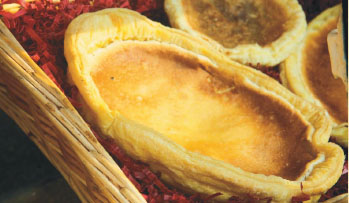
© DAVID MARTYN HUGHES/ALMAY
Bakewell Pudding
You can buy Bakewell tarts in bakeries all over England, and most English cookbooks have a recipe for it. But to buy a Bakewell Pudding you have to go to Bakewell, where several bakeries make them and all restaurants serve them—sometimes with custard, more often with whipped cream. On Peak District farms, Bakewell Pudding is a favorite ending to Sunday lunch. Traditionally, it is made in an oval dish, though when the family is large a roasting pan is used to make sure there is enough for everyone.
For some locals almonds are an absolute no-no, reviled as the ingredient that turned Bakewell pudding into Bakewell tart, but many favor them. Alison Uttley, the children’s author who grew up on a Derbyshire farm and wrote Recipes from an Old Farmhouse to record the dishes of her childhood, includes them. In the following version, they are an option.
8 ounces puff pastry
(or one sheet from a store-bought package)
3 tablespoons raspberry jam
4 eggs
1 additional egg yolk
1/2 cup sugar
1 stick butter
3/4 cup ground almonds plus 3-4 drops almond extract (optional)
Preheat the oven to 425. Lightly grease a 9-inch deep-pie dish. Roll out the puff pastry thinly and line the pastry dish with it. Spread the jam on the pastry—just on the base, not on the sides—and place the dish in the fridge to stay cool. Thoroughly beat the eggs, egg yolk and sugar together and set aside.
[caption id="ADaytoVisit_img3" align="alignright" width="240"]
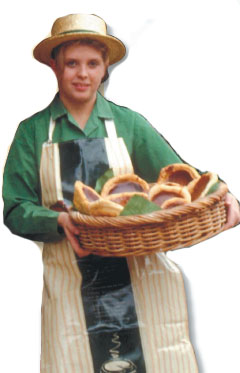
In a small pan over moderate heat, melt the butter then increase the heat and let the butter bubble for about a minute until it develops a nutty aroma. Remove from the heat; let the bubbling stop, then whisk it into the eggs and sugar. If you are using almonds and almond extract, stir them in at this point. Pour this filling into the prepared pie shell and bake for 10 minutes to set the pastry, then reduce the heat to 400 and bake for a further 10-15 minutes or until the pastry is golden and the filling slightly domed. To test for doneness, slide a knife blade into the center. If it comes out clean, the pudding is ready. Cool to lukewarm or room temperature before serving.
Chatsworth, Haddon Hall, All Saints Church and Bakewell’s markets are jewels embedded in the gorgeous setting of the Peak District, whose hills protect the town. From their heights, the Wye bubbles through Bakewell, attracting flocks of mallards, geese, and swans—and people who love to feed them. There are cozy pubs, many warmed by old-fashioned coal fires; a cluster of shops and restaurants, mostly locally owned rather than chain-store branches; and little courtyards housing craft studios and cafés. Everything works together to make Bakewell one of those perfect places that beckon for a return visit.
[caption id="ADaytoVisit_img4" align="aligncenter" width="407"]
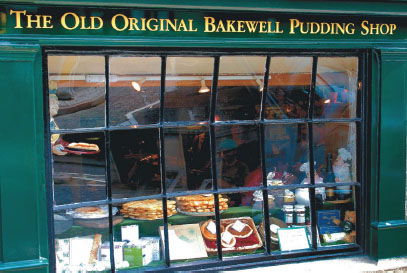
BRITAINONVIEW/DAVE PORTER
[caption id="ADaytoVisit_img5" align="aligncenter" width="1024"]
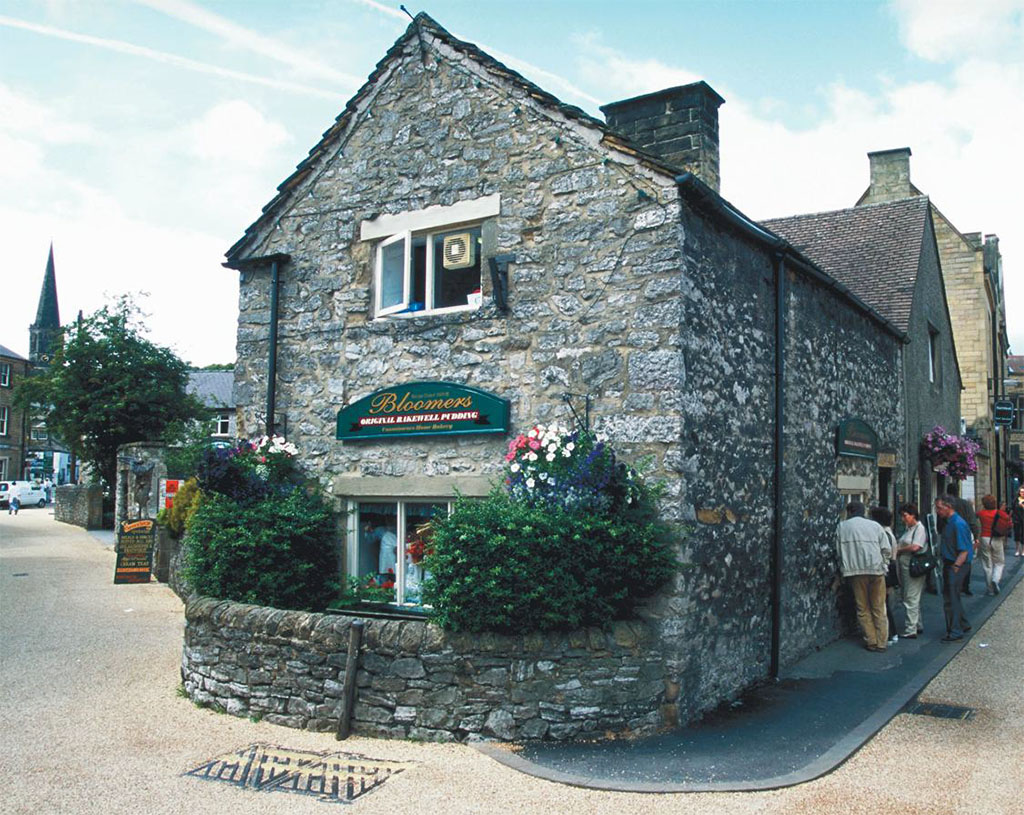
BOTH IMAGES BRITAINONVIEWES/ALAMY





Comments